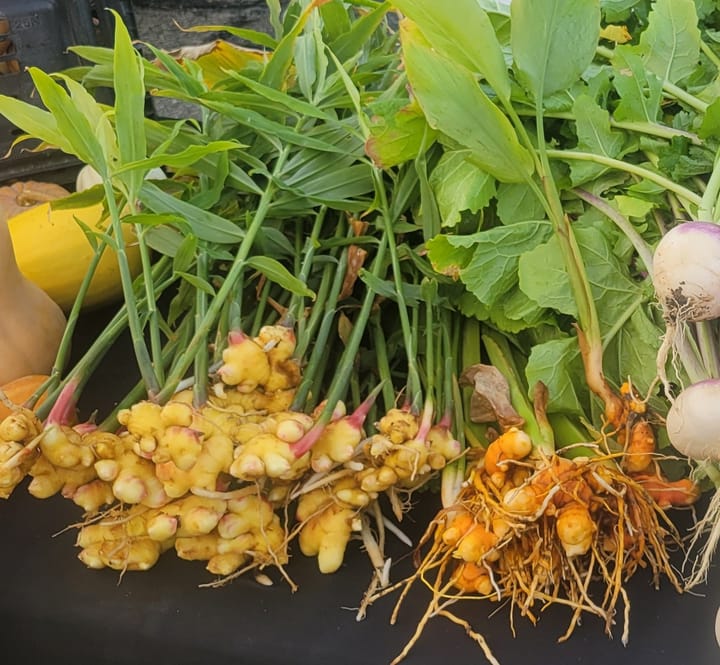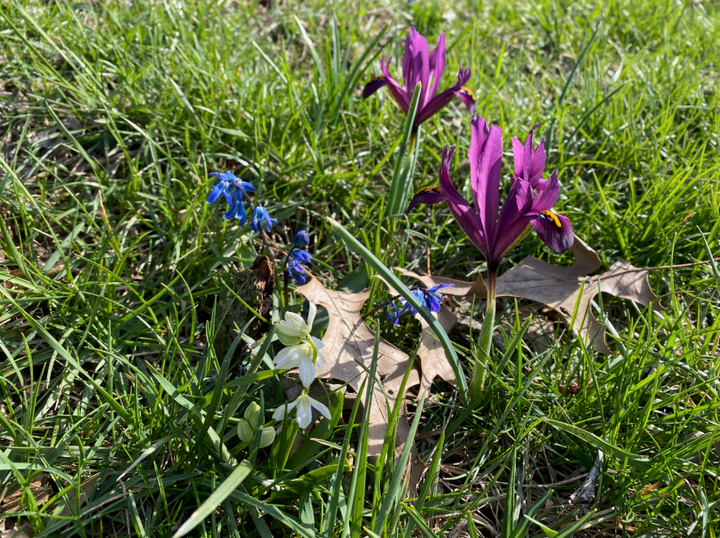On My Plate: Peaches
"The online arbiter of everything (AI, of course) defines the color peach as 'a light, warm color that blends pink and orange.'"

Local peaches can be found at the Oxford Farmers Market from several growers. Yellow and white clingstones are currently available.
The online arbiter of everything (AI, of course) defines the color peach as “a light, warm color that blends pink and orange.” Confusingly, Scott Downing’s white flesh peaches are called Summer Rose and his yellow flesh peaches are called Red Haven. Meanwhile, the name of the Johnson Family Farm’s peach is a combination of letters and numbers that I didn’t record. Downing also has a variety called a donut, which has white flesh.
The peach linguistic confusion gets worse. Its Latin botanical name is Prunus persica, which translates as Persian plum. But a peach is not a plum, and it originated thousands of years ago in China, not Persia.
As long as I’m on a roll, how about Georgia calling itself the Peach State, when in reality only 5% of U.S. peaches come from that state? Several companies send trucks to our area advertising “Georgia peaches” that are actually grown in South Carolina, which accounts for 13% of U.S. peach production. Three-fourths of U.S. peaches come from California.
What about peach fuzz, the bane of adolescence? Peach fuzz may be annoying to teenagers, but the fine hairs on the skin of a peach help to protect it against insects and water. The fuzzy skin must be peeled from conventional supermarket peaches, because they rank fifth on the Environmental Working Group’s list of Dirty Dozen produce. However, our local growers do not apply pesticides to their peach trees. The skin has fiber and nutrients that are lost if peeled, so peel a local peach only if you don’t like the taste or texture.
I’ve saved the best linguistic confusion for last: The French word for “peach” (pêche) is the identical word as “fish,” and it uses the same letters as the French word for “sin,” except for different accent marks. Thus, the sentence “it is a sin to fish for a peach” translates to “C'est un péché de pêcher une pêche.”
Underlying all this linguistic silliness is a 40% decline in U.S. peach production since 2000. A University of California survey commissioned by growers in that state found especially high consumer dissatisfaction with supermarket peaches. Because they are harvested in California before they are ripe, by the time they get to the supermarket they are mealy or hard and never ripen to sweetness.
Peaches come in clingstone and freestone. All peaches in Oxford’s Farmers Market so far this season are clingstone. They are juicier and sweeter than freestone, which predominates in supermarkets, and are valued primarily for the ease of extracting the pit.
When you bring local peaches home, keep them out on the counter. They may seem a bit hard at first, but they are near perfect ripeness and are ready to eat in a day or two. Watch them closely and move them to the refrigerator as soon as they are soft, where they can be held for a few more days. Take some out of the refrigerator in the morning so they can be eaten at room temperature during the day.
To end on an upbeat linguistic note, Dictionary.com defines “peachy” as “an informal and playful way of saying excellent or wonderful.” Our local peaches are indeed peachy.
James Rubenstein is president of the Board of Directors for the Oxford Free Press and professor emeritus of geography at Miami University.




